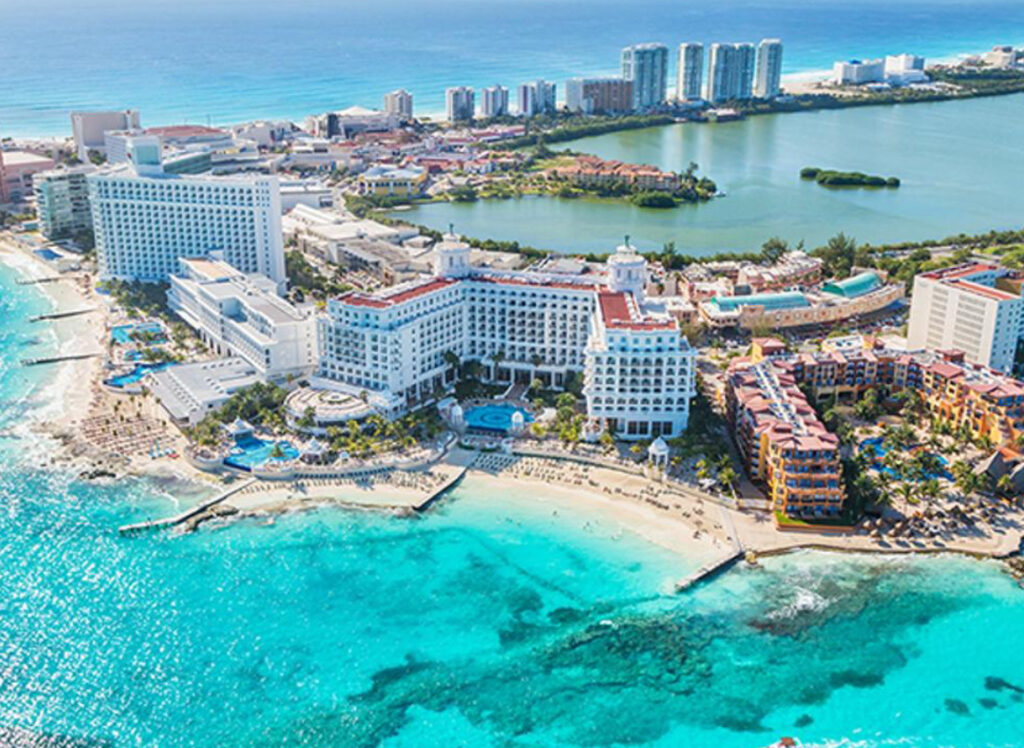When we celebrate Cinco de Mayo, it often becomes an occasion veiled in shallow festivity—sombreros and salsa, margaritas and mariachi. But behind the commercialization lies a vast and richly woven cultural fabric stretching across 31 states and one federal district that make up the nation of Mexico. Each state carries its own topographies, histories, and inheritances. They are not just administrative divisions, but regions of myth, identity, cuisine, revolution, and art.
Baja California: The Crossroads at the Edge of the North
Clue: Tijuana is its most popular city.
Answer: Baja California
Border cities are often distorted through the lens of stereotype—Tijuana perhaps more than any other in North America. Located in the state of Baja California, Tijuana lies across the border from San Diego, California, acting both as a threshold and as a mirror of global mobility and economic disparity. Baja California’s proximity to the U.S. inflects it with a binational character, a liminal zone where tacos de birria might sit beside Korean BBQ trucks and punk bands rage against cartel violence and ICE policies alike.
But Baja California is more than Tijuana’s gritty glamour. The state also stretches into the serene Valle de Guadalupe, Mexico’s wine country, often likened to a scruffier Napa Valley. It is the arid beaches of Rosarito, the jagged cliffs plunging into the Pacific, the slow hum of surf culture intersecting with the rhythms of migrant labor and high-end tourism.
Geographically isolated from the Mexican mainland, Baja California carries a spirit of both wildness and rebellion. It feels almost like an island—detached, defiant, dynamic. It is a land of edges: political, geographic, and cultural.
Oaxaca: Land of Mezcal, Mole, and Mountains
Clue: 90% of Mexican mezcal comes from this state, whose cuisine is also known for moles.
Answer: Oaxaca
Oaxaca is the kind of place where flavor becomes an act of resistance. It is the soul of southern Mexico, a mountainous, multiethnic region home to sixteen officially recognized indigenous groups, including the Zapotecs and Mixtecs. The richness of Oaxaca lies in its plurality: in its weaving traditions, its calendas (street parades), its Day of the Dead marigolds, and in its kitchen, where seven moles reign as ancestral inventions.
To speak of Oaxaca is to speak of mezcal—not as a trend, but as a ritual. Distilled from agave using age-old underground pit-roasting methods, mezcal is more than a drink here; it is an agricultural legacy, a spiritual connector, and increasingly, a contested economic resource. As mezcal booms globally, Oaxacan producers wrestle with commercialization, trying to balance fair trade, sustainability, and identity.
From the painted markets of Tlacolula to the sacred ruins of Monte Albán, Oaxaca resists reduction. Its geography ranges from the Sierra Madre to the sun-washed beaches of Puerto Escondido, where surfers now mingle with digital nomads. It is both deeply rooted and surprisingly cosmopolitan, a place that speaks many tongues—both literal and metaphorical.
Tabasco: Spice, Petroleum, and Political Power
Clue: It shares a name with a red pepper-based hot sauce.
Answer: Tabasco
Tabasco the state is often overshadowed by Tabasco the brand—a Louisiana-based hot sauce whose name comes from the region but whose product hails from the American South. Yet the real Tabasco, located in southeastern Mexico, is less about bottle labels and more about sprawling wetlands, oil rigs, and political gravitas.
This is the state that gave the country its current president, Andrés Manuel López Obrador, as well as centuries of cacao-based culture that predate the Spanish arrival. Tabasco is part jungle, part river delta—nourished by the mighty Río Grijalva and cloaked in dense vegetation that once shielded Olmec civilization, arguably the mother culture of Mesoamerica.
Modern Tabasco is marked by contradictions. It’s one of Mexico’s most oil-rich states, and yet remains vulnerable to flooding, environmental degradation, and underdevelopment. It is both an economic engine and an ecological concern, a place where petroleum pipelines run beneath pre-Columbian relics. But perhaps that tension is what defines it—a territory of complexity beneath a name made iconic for a flavor not its own.
Chihuahua: Desert Dog and Border Legend
Clue: A dog breed, one of the smallest in the world, is named after it.
Answer: Chihuahua
The Chihuahua dog may be small, but the state that gave it its name is massive—Mexico’s largest by land area. Encompassing vast desert expanses and highland forests, Chihuahua is a land of elemental contrast. Its geography echoes the American Southwest, yet its identity is fiercely Mexican—formed through resistance, revolution, and ranchero pride.
Home to the city of Juárez—another complex borderland metropolis—Chihuahua has long been a site of economic flux, drug conflict, and cultural hybridization. It is also the spiritual heartland of Mexico’s 1910 revolution, with figures like Pancho Villa etched into its political memory and into its dusty landscapes.
Beyond politics and narco headlines, however, lies a region rich in resilience. The Rarámuri (Tarahumara) people of Chihuahua are legendary for their long-distance running, tracing trails through Copper Canyon (Barranca del Cobre), a natural marvel deeper and broader than the Grand Canyon itself.
And the dog? A national icon—scrappy, loud, and loyal. Much like its namesake state.
Yucatán: Ruins, Resistance, and Renaissance
Clue: If you’ve visited Chichén Itzá, the world-renowned Mayan ruin, then you’ve been to this state, which shares its name with a peninsula.
Answer: Yucatán
Yucatán is a place where myth and stone merge. The ruins of Chichén Itzá rise from the jungle not as monuments to a dead past, but as glyphs of continuity. This was—and remains—Maya land. Despite centuries of conquest and assimilation, the language is still spoken, and the calendar still consulted. The cultural survival of the Maya is not a relic but a living structure.
Unlike much of Mexico, Yucatán remained culturally and geographically distinct for much of its history. For years, it functioned almost as its own country, accessible more easily by sea than land. The Caste War of Yucatán in the 19th century was one of the most formidable indigenous uprisings in the Americas. That independent streak lingers in Yucatán’s people—proud, rooted, self-reliant.
Modern Mérida, the state capital, is among the safest and most refined cities in Latin America. It blends colonial elegance with indigenous endurance, hacienda nostalgia with contemporary design. Yucatán’s culinary staples—cochinita pibil, sopa de lima, papadzules—are not just regional flavors but ceremonial dishes, served with a side of time.
And let us not forget the sacred cenotes: underwater limestone caverns once used for ritual sacrifice, now reimagined as serene tourist destinations. They are thresholds—portals between life and death, old world and new.
Beyond the Quiz: The Cartography of Cultural Memory
This geographical trivia might begin as a test of knowledge, but it ultimately invites a meditation on the emotional and political cartography of Mexico. Each state is more than a point on a map—it is a story, a contradiction, a system of belief. To name them correctly is not enough. One must also feel their textures: the spiced breath of a Oaxaca market, the dry wind in Chihuahua, the salt-slicked edge of Baja.
In their diversity, these five states reveal a portrait of Mexico that defies monoculture. This is not a country of one face, but of many expressions—indigenous and mestizo, rural and urban, cosmopolitan and ancestral. And Cinco de Mayo, though often misunderstood outside of Mexico as a catch-all for independence celebrations, can serve as a reminder to look deeper. It commemorates the Battle of Puebla, yes—but also the broader spirit of Mexican tenacity.
Perhaps, then, the best way to honor Mexico on this day is not through tequila shots or party favors, but through learning. Through exploration. Through naming not just the states—but their people, their music, their soil, their art.
Mission: The Geography of Belonging
To know the names of Mexico’s states is to begin to understand the map of its soul. Baja California, Oaxaca, Tabasco, Chihuahua, Yucatán—each unfolds like a chapter in an epic that is still being written. Geography is never neutral. It is a container of memory, a platform for culture, and a battlefield for identity.
So the next time you take a sip of mezcal or admire a tiny Chihuahua or gaze at the ruins of Chichén Itzá, know that you are touching something deeper than trivia. You are brushing against the eternal layers of a land that refuses to be simplified.
And that—on Cinco de Mayo or any day—is worth celebrating.
No comments yet.







